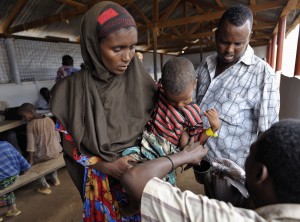The following testimonials are from people working within the Lutheran church in Nicaragua, ILFE [Iglesia Luterana Fe y Esperanza], after their attempt to bring aid to Aquespalapa, a community affected by severe flooding in their region. May God’s hands continue to hold them in their time of need and may our prayers sustain them in their good work.
“I could see in the journey to Aquespalapa a lot of water, flooding, and that everything in the fields was dead. I saw cattle that were trying to eat the last of what was in the pastures; there was the Estero Real River which had overflowed its borders and flooded the community. We also encountered many people in the area fishing, I imagine that they had probably nothing to eat and were looking to other resources. We finally arrived to the main entrance to the community; we could not advance any further because the water covered the road, created deep holes, and was also in all the houses. It was very sad that we could not enter and help our brothers since they had called us from within the community to ask for our help. We have hope in God that the water ceases and allows us to enter into the community the next trip we make so that we can help our brothers.”
Member of the Youth Ministry
Central Church
“I started the day with a lot of hope and this hope continues for our brothers in the communities. However my hope does not change the fact that we could not enter into the communities of Aquespalapa and Jicote. We saw many signs of the disaster in our excursion to the communities; flooded fields and houses, destroyed highways, and lost crops. All of these we saw before we even made it to the community. At the entrance to the community we had to stop because the road was underneath water. We saw a tractor pass into the community but it was not possible in our pick-up truck. We were so close but we could not bring the help, the food, nor the hope that we had brought with us to give to our brothers. For me, this was the most difficult; to be so close, but without the power to do anything. However I know that our brothers need and will continue needing our help and the Nicaraguan Church of “Fe y Esperanza” will be present with the helping hand of God for our companions in Christ!”
Missionary
“My years are already many with my work experience within ILFE and there have been many humanitarian aid activities in which I have participated, however that does not mean I am not impacted of how once again a natural phenomenon can cause such a large disaster and affect the poorest people. Before my visit to Chinandega, I did not believe that the damage was that great because in the city, where I live, even though the rains have been strong, you do not see many effects. I went with much enthusiasm and love to take this small packet of food, but more importantly, to take the word of God and give all the people who are suffering a message of hope. I am full of great sadness that we could not make it to the community because the road was flooded and the current threatened to take our car. The team made the painful decision to not risk it and instead return to Managua until the water subsides so that we can try again to enter the community. I took a camera and tried to capture what most impacted me and now I share that with you all.”
Youth Ministry
————-
Gifts to ELCA International Disaster Response allow the church to respond globally in times of need. Donate now.



